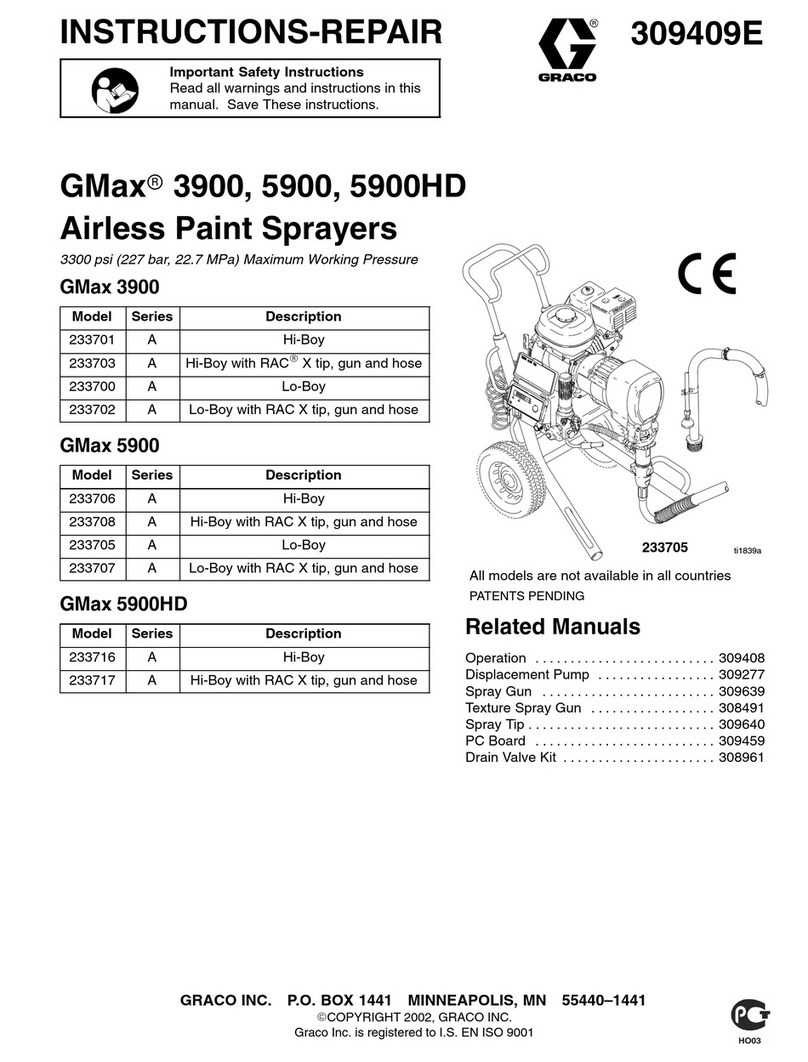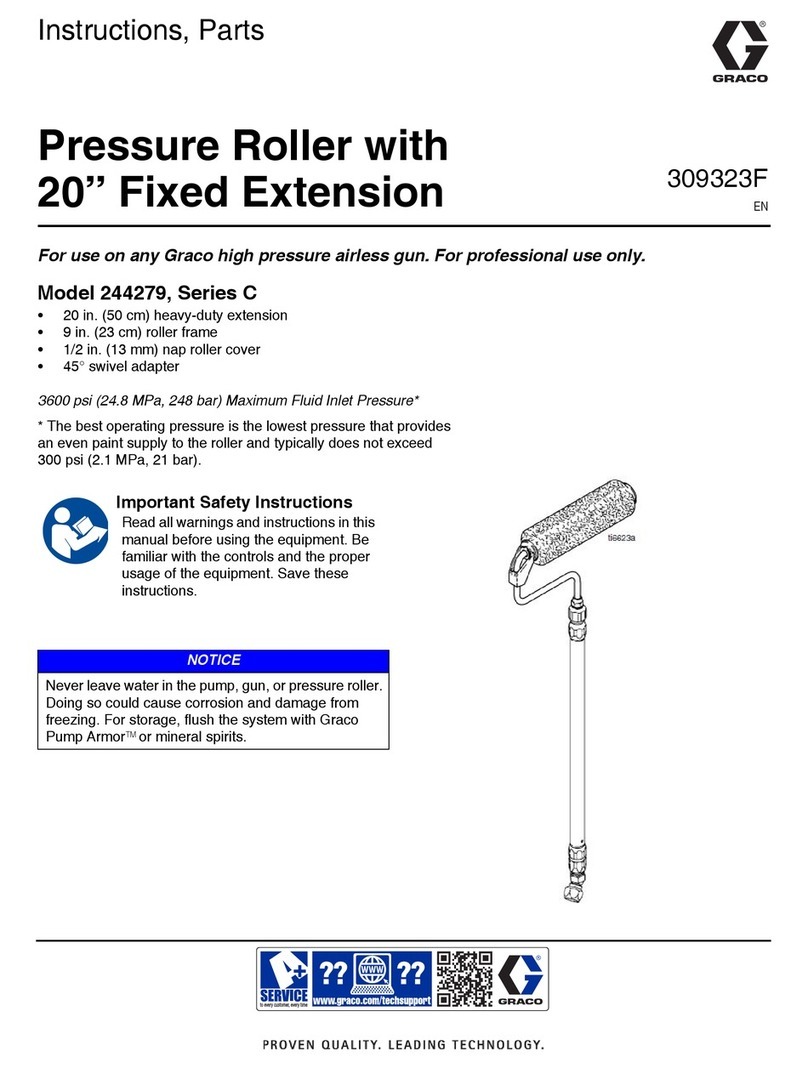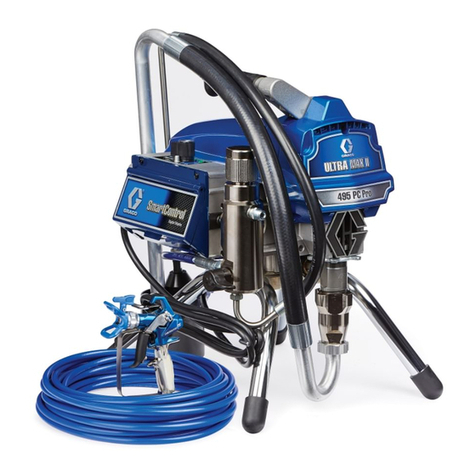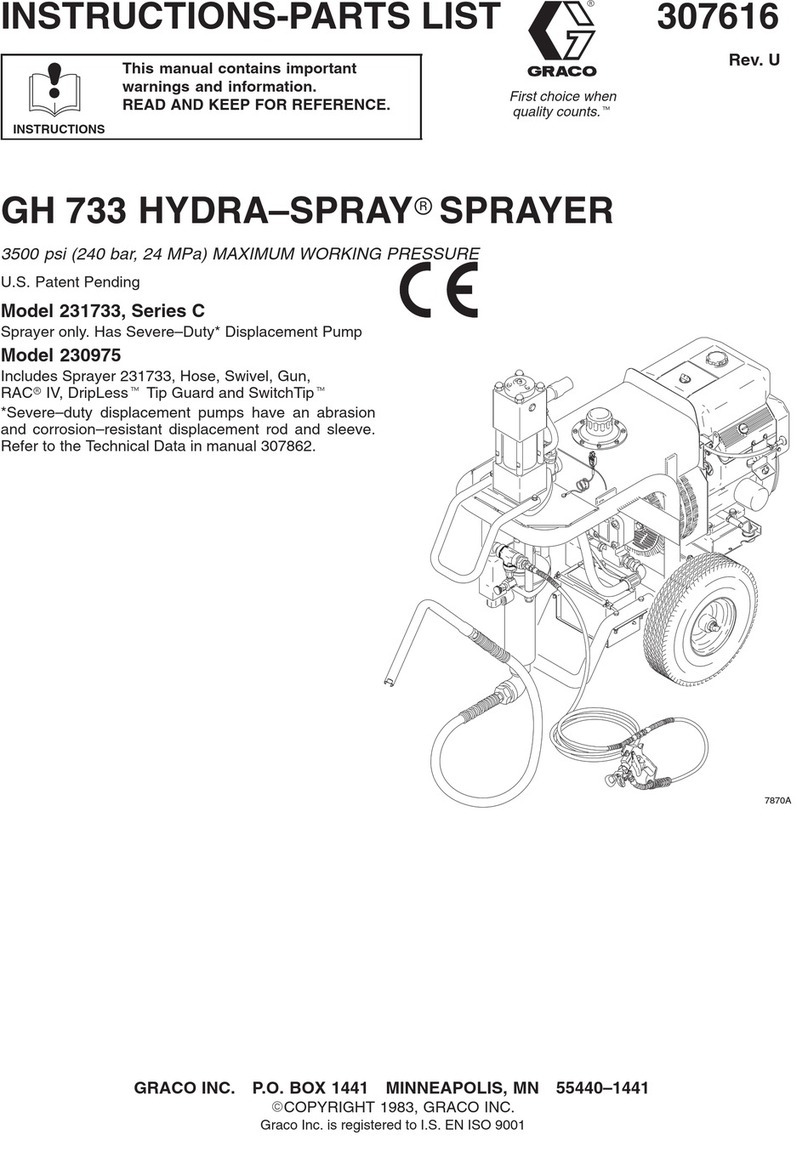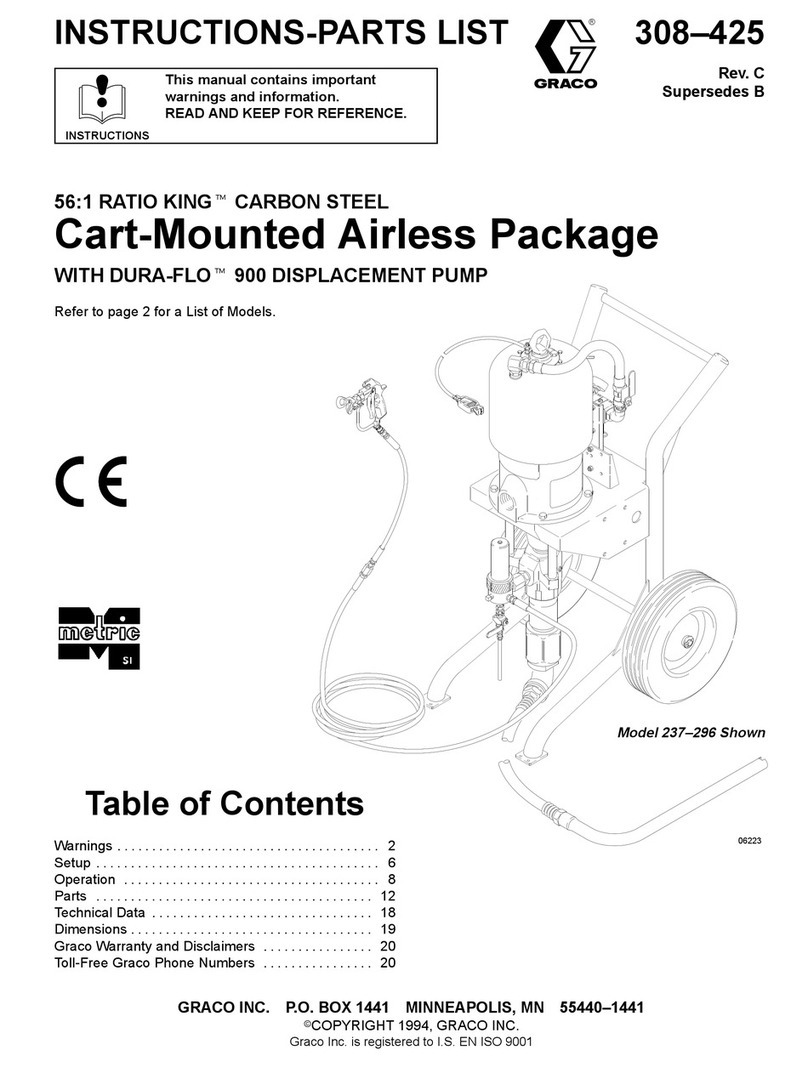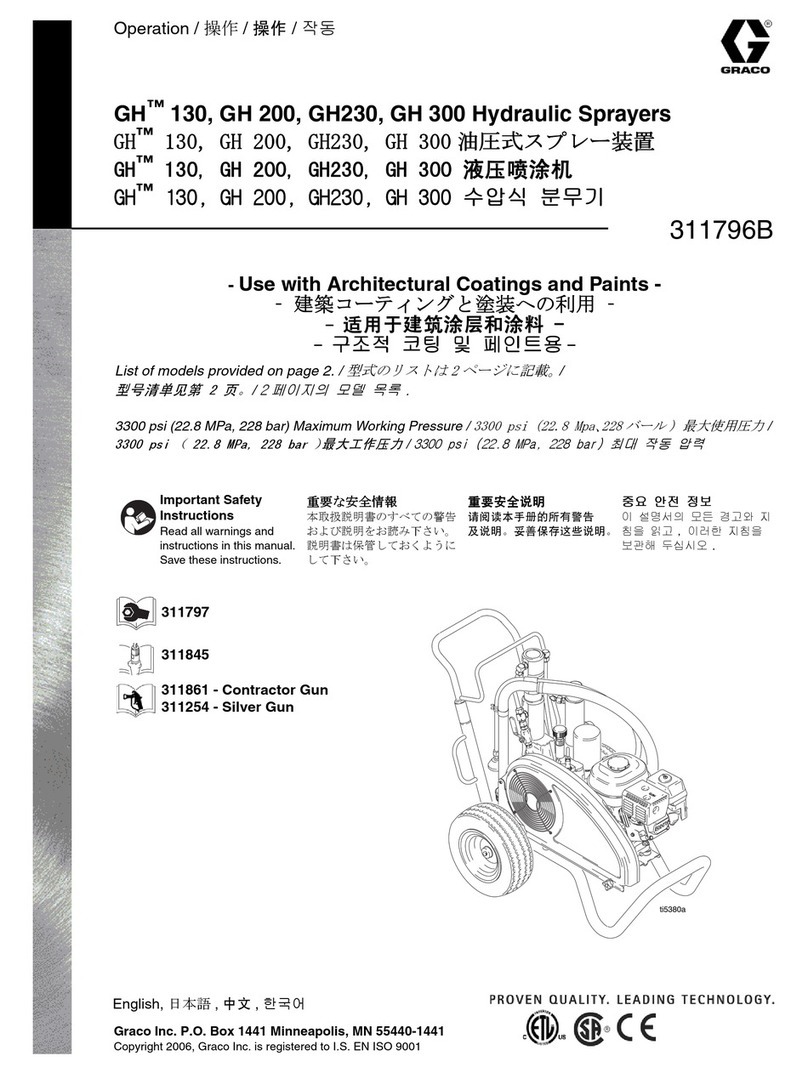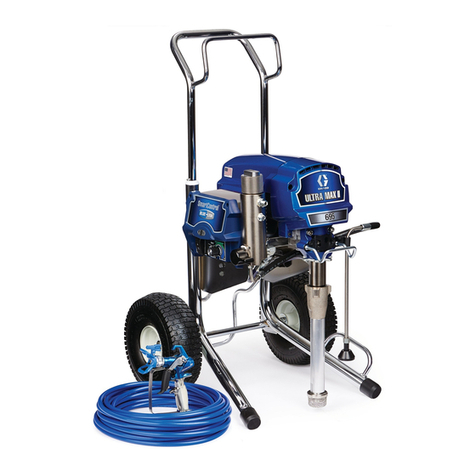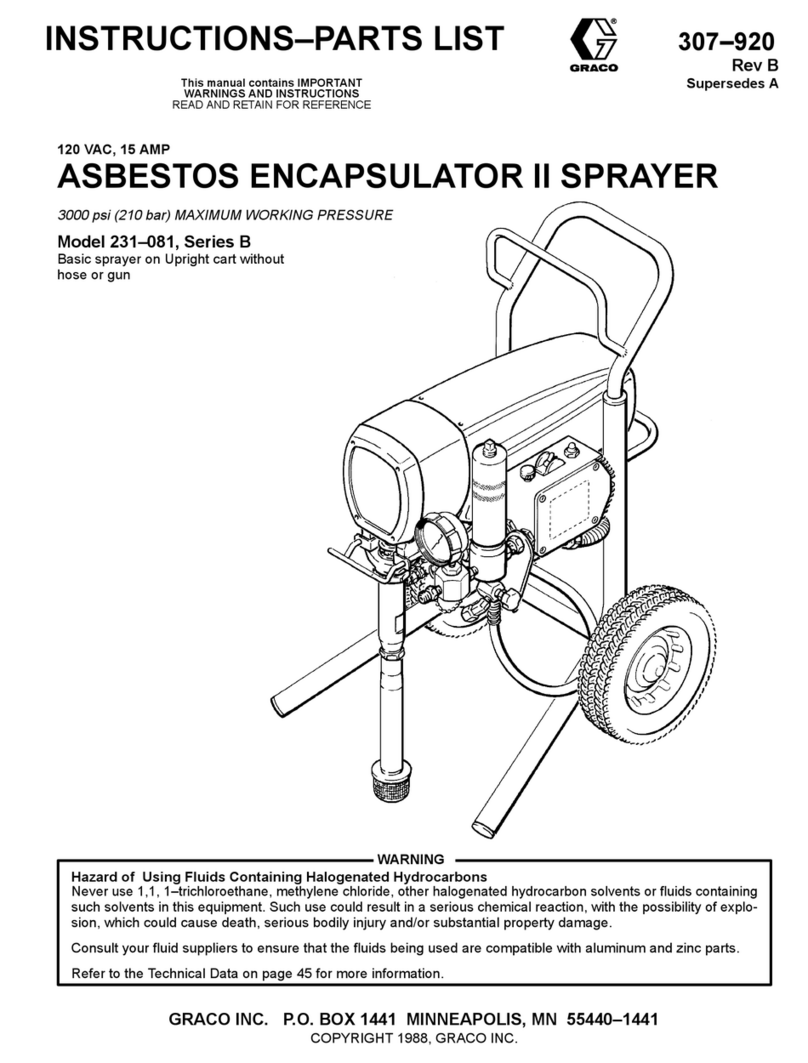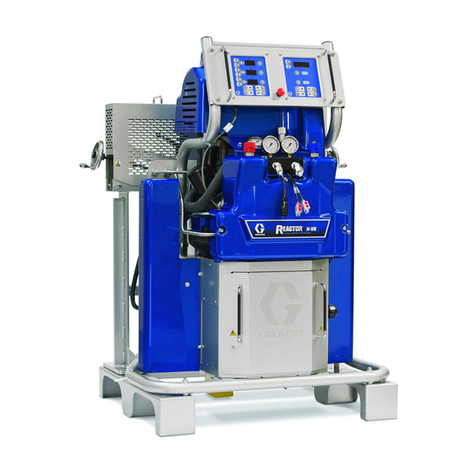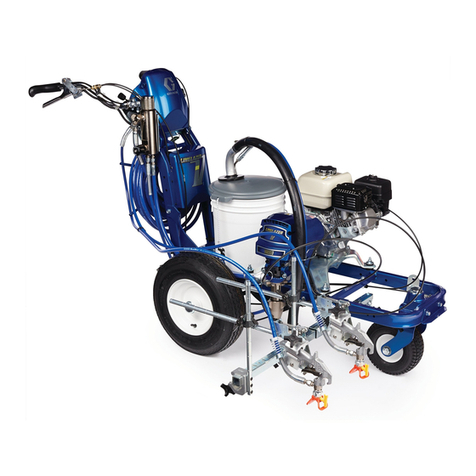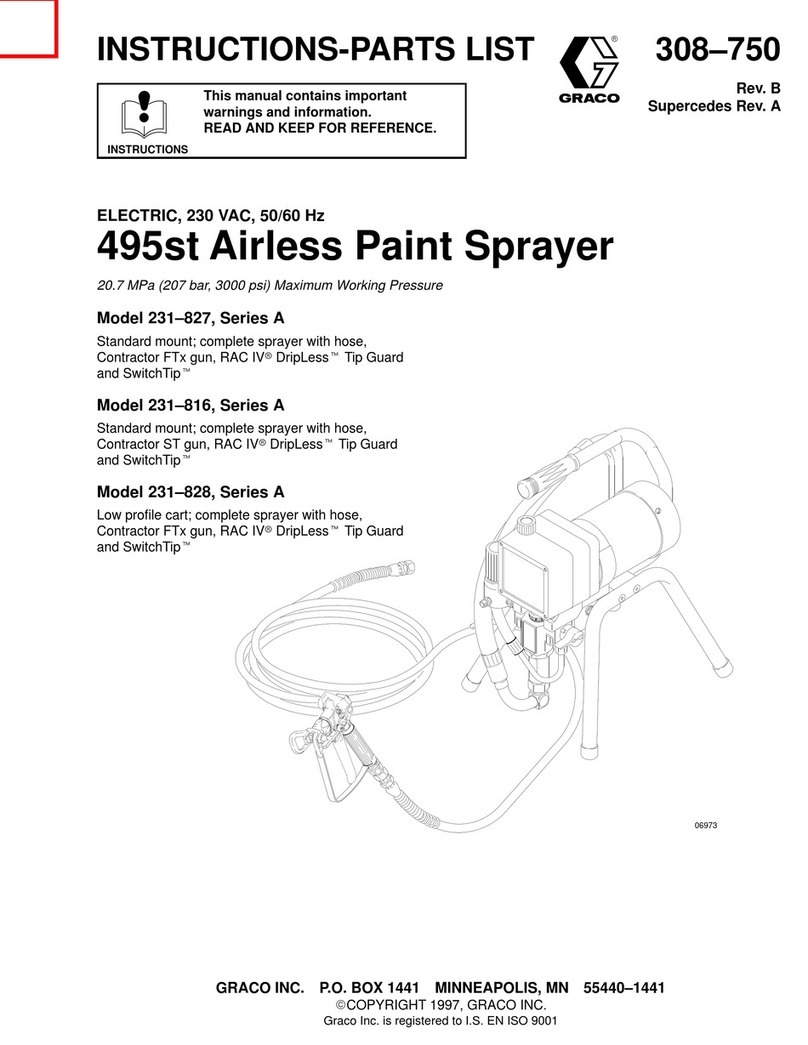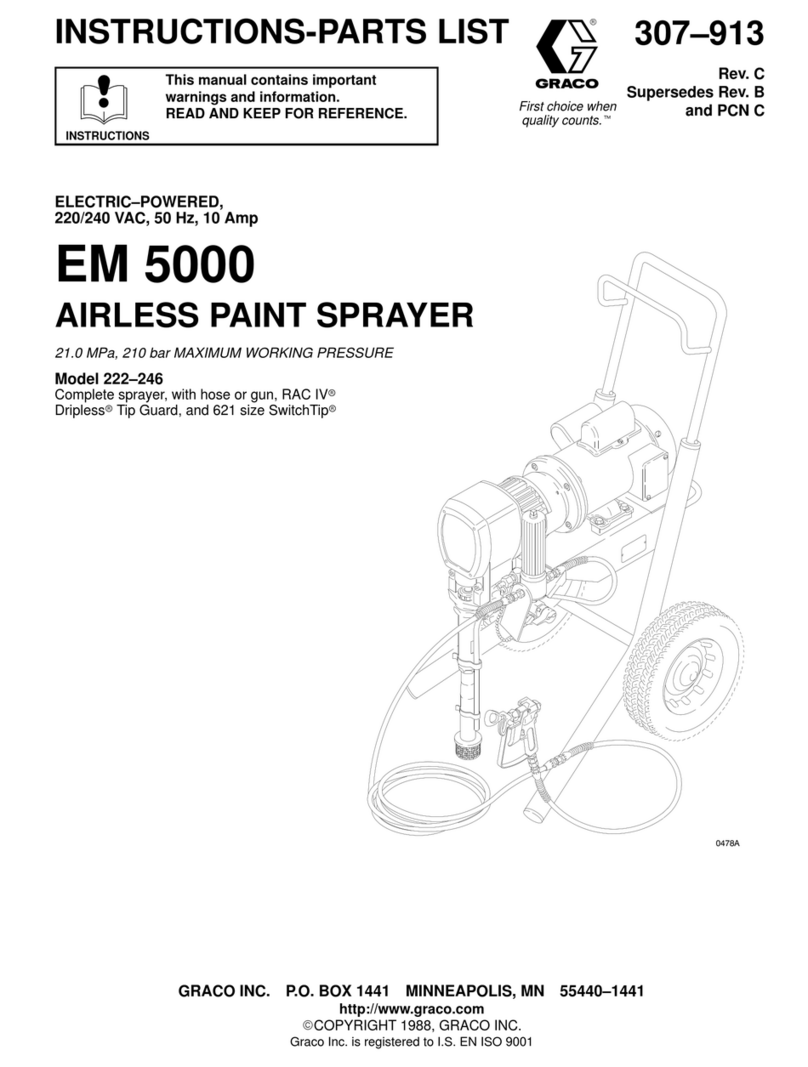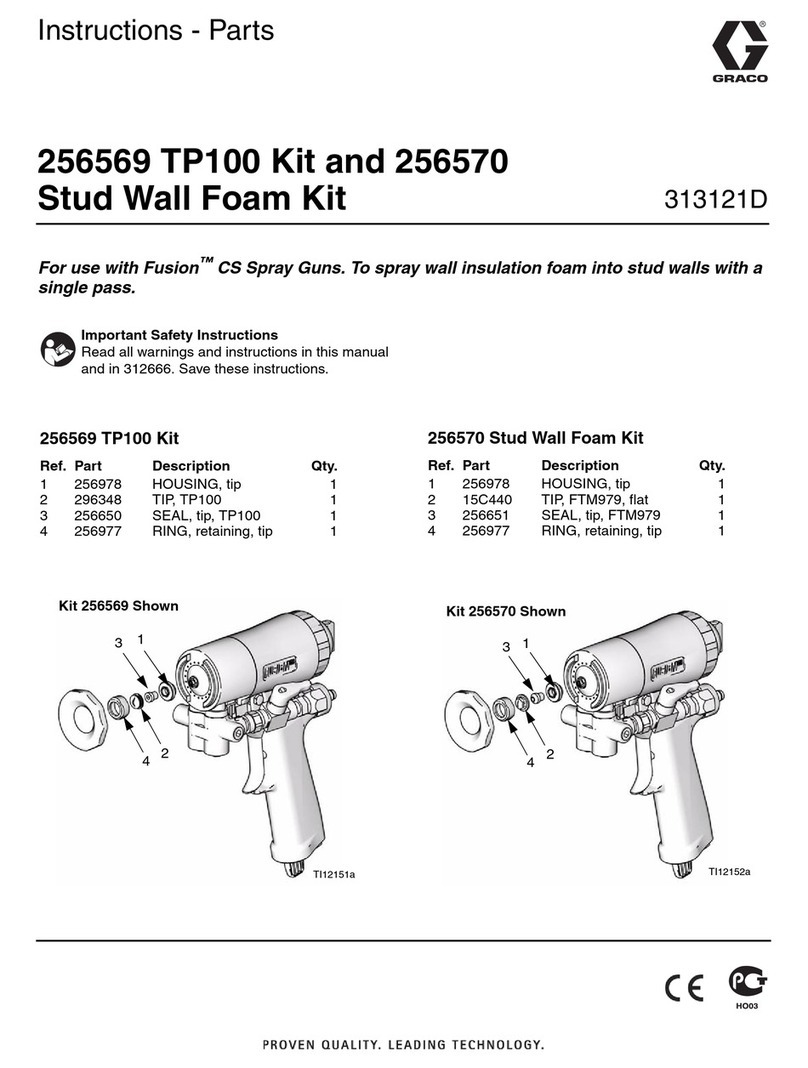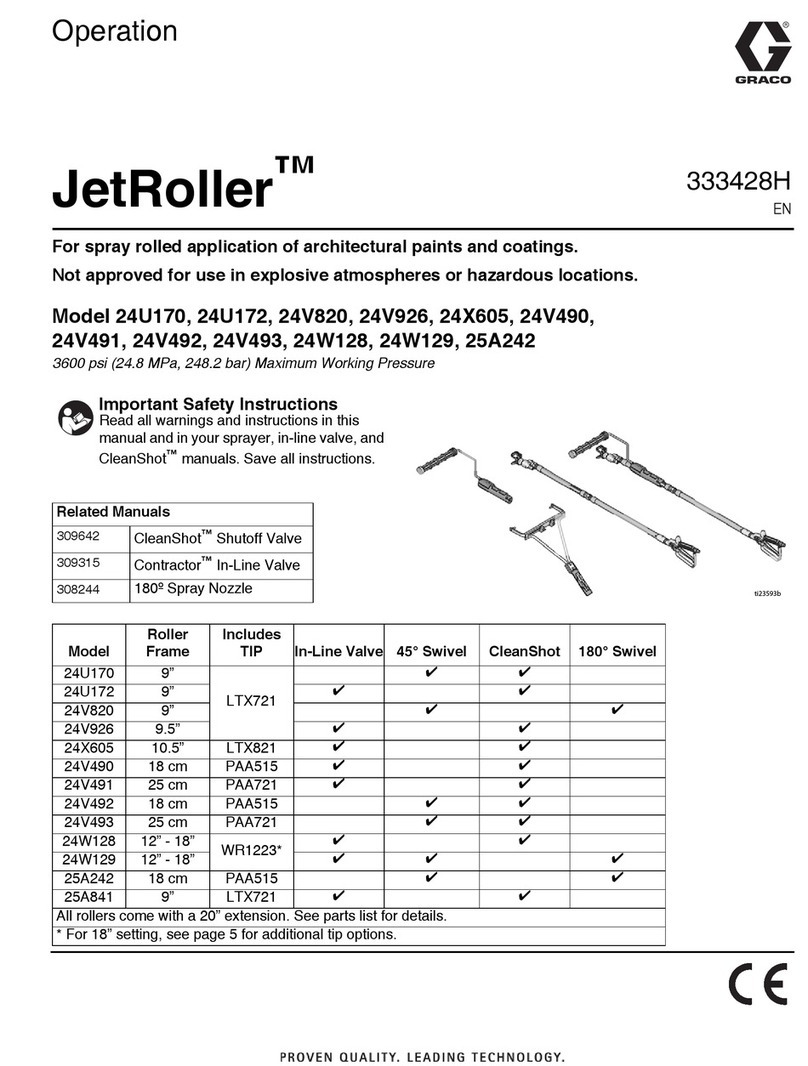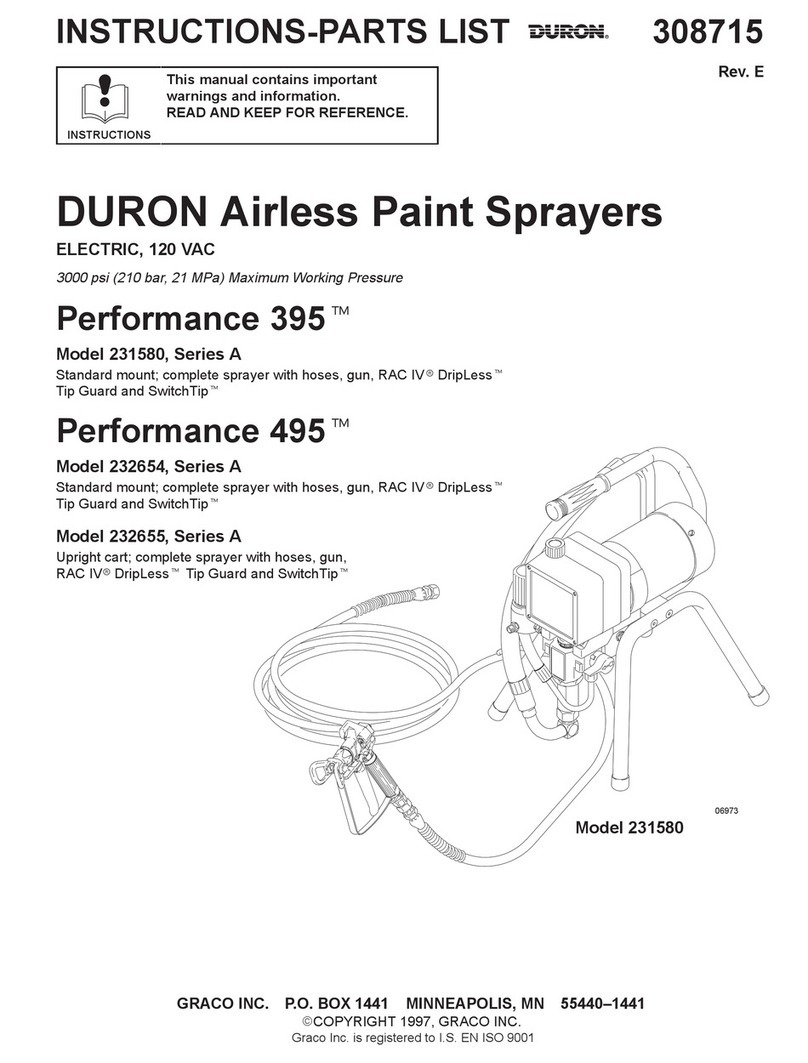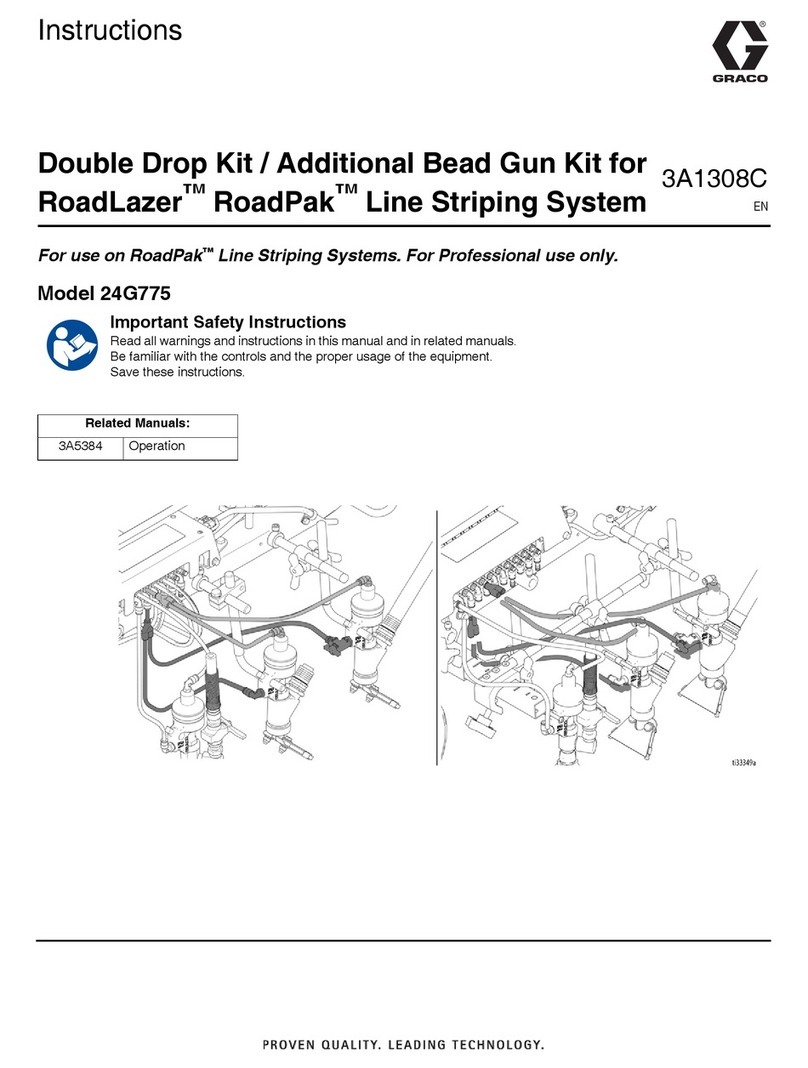
Startup
Pressure Relief Procedure
WARNING
INJECTION
HAZARD
The system pressure must be manually
relieved to prevent the system from
starting or spraying accidentally
. Fluid
under high pressure can be injected through the
skin and cause serious injury
. T
o reduce the risk of
an injury from injection, splashing fluid, or moving
parts, follow the
Pressure Relief Procedure
whenever you:
are instructed to relieve the pressure,
stop spraying,
check or service any of the system equipment,
or install or clean the spray tip.
1.
Lock the gun trigger safety
.
2. T
urn the ON/OFF switch to OFF
.
3.
Unplug the power supply cord.
4.
Unlock the trigger safety
. Hold a metal part of the
gun firmly to the side of a grounded metal pail, and
trigger the gun to relieve the pressure.
5.
Lock the gun trigger safety
.
6.
Open the pressure drain valve, having a container
ready to catch the drainage. Leave the valve open
until you are ready to spray again.
If you suspect that the spray tip or hose is completely
clogged, or that pressure has not been fully relieved
after following the steps above,
VER
Y SLOWL
Y
loosen the tip guard retaining nut or hose end coupling
to relieve the pressure gradually
, then loosen com
-
pletely
. Now clear the tip or hose.
Startup Procedure
Use
this procedure each time you start the sprayer to
help ensure the sprayer is ready to operate and that
you start it safely
.
NOTE:
If this is a first-time startup, flush the sprayer
.
See page 12.
NOTE:
Refer to Fig. 1 and other figures referenced in
the text as you start the sprayer
.
1.
Open the pressure drain valve (42)
.
2. Do not install the spray tip until the pump is
primed.
3. Put the suction hose (32) into the paint
. If you
are pumping from a pail, push the drain hose (33)
down below the top of the pail to avoid splashing
paint wen the drain valve is opened.
4. T
urn the pressure knob (64) to the minimum
setting.
5. Unlock the gun trigger safety
. See Fig. 2, page
7.
CAUTION
T
o reduce the risk of damage to the displacement
pump packings, never run the pump without fluid in
it for more than 30 seconds.
6. T
o prime the pump
, turn the sprayer switch (52)
on. Slowly increase the pressure until the sprayer
starts. When fluid comes from the pressure drain
valve, close the valve.
WARNING
T
o reduce the risk of static sparking and splashing
when flushing, always remove the spray tip from
the gun, and hold a metal part of the gun firmly to
the side of, and aimed into, a grounded metal pail.
See Ref. A in Fig. 6.
Fig. 6 01024
A
7. T
o prime the hose
, lower the pressure to reduce
splashing. Hold a metal part of the gun firmly
against and aimed into a grounded metal pail. See
the
WARNING
above. Hold the trigger open and
slowly increase the pressure until the pump starts.
Keep the gun triggered until all air is forced out of
the system and the fluid flows freely from the gun.
Release the trigger and lock the gun trigger safety
.
